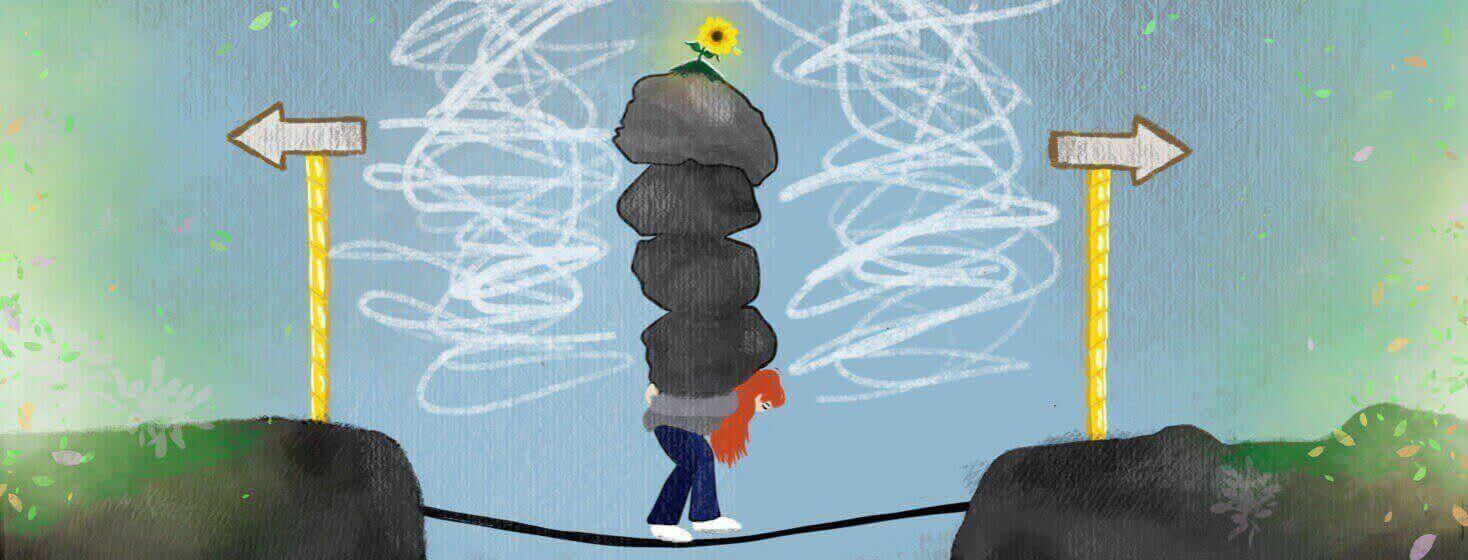Coping with Difficult Caregiver Decisions
"We made the best decision based on the information we had at the time."
It's the mantra I repeat to myself when the feeling of guilt starts to creep in or I let myself begin to wonder, "What if?"
As a caregiver to a medically complex child with intractable epilepsy, I learned early on how neurology often seems about 60 percent science and 40 percent trial and error. "The brain is still so mysterious," her medical team often says when I question why a treatment isn't working to control her seizures.
So, where does that leave us? How do we make decisions when there isn't a "one-size-fits-all" for epilepsy? We make the best decision based on the information we have. However, even with research and knowledge from exceptional medical professionals, I've still felt an insurmountable amount of pressure with each decision we've had to make. Especially when some decisions can have permanent impacts.
Featured Forum
View all responsesA diagnosis of epilepsy, infantile spasms, and focal cortical dysplasia
When my daughter, Juniper, was 6 months old, she was diagnosed with an incredibly rare and catastrophic form of epilepsy called infantile spasms. All the research showed that unless seizures were controlled, my daughter's development would be severely impacted. With each failed medication, I became more desperate for answers.
At 9 months old, Juniper had her first surgical evaluation due to suspected focal cortical dysplasia (FCD) in the right hemisphere of her brain. FCD occurs when the brain is first developing. Instead of migrating to the areas of the brain neurons are supposed to go, they "clump" together and form dysplasia.
The surgical committee was unanimous in their recommendation to move forward with brain surgery. Unfortunately, they were split 50/50 on which surgery to recommend. The first option, a TPO resection, would remove the temporal, parietal, and occipital lobes of my daughter's brain. This surgery was considered "less aggressive" compared to the other option of a complete hemispherectomy. The hemispherectomy would disconnect the entire right hemisphere of my daughter's brain, including her motor strip which controls the left side of her body.
Brain surgery decision: TPO resection
We chose the more conservative TPO surgery. Our daughter's development took off. However, 2 months later, her seizures returned.
It was time for another decision. So, like we've always done, we gathered information.
The pathology report from her first surgery confirmed FCD. Therefore, it was likely her frontal lobe had FCD as well. Additionally, bilateral dysplasia was incredibly rare. At the time, our neurologist could only find one research paper on cases of bilateral dysplasia and those children didn’t "present" like Juniper. She was developing. She was babbling. She was socially engaged.
Doing all that you can do as a parent
Based on all this information, we were given an 85 percent chance the surgery would be successful. At a less-than-5-percent chance of seizure control with medication, these odds were significantly better. A hemispherectomy meant removing her frontal lobe and motor strip. As a result, Juniper would have permanent cognitive and physical disabilities by removing her frontal lobe and motor strip. However, neuroplasticity coupled with the life-threatening reality of seizures was enough to convince us to sign on the dotted line and go forward.
"We made the best decision based on the information we had at the time."
Less than a month after Juniper's surgery, we faced the horrifying reality that the hemispherectomy didn't work. We were stunned. Her medical team was stunned. Even with all the research, data, and statistical odds in her favor, science hadn’t caught up to our daughter. She was, and still is, a medical anomaly.
Over a year later, I replay the weeks leading up to her second surgery over and over again in my head. Where did we go wrong? What did we miss? How did we not see this coming? But the truth is, we did everything we could to give Juniper the very best odds of seizure control, and therefore, the very best opportunity for development. The reality is, sometimes, things just don't go as planned.
Medicines fail. Surgeries aren't successful. Treatments don't work.
Do we regret surgery?
I'm often asked if we regret surgery. My answer is complicated. On one hand, I wish I would have somehow known the hemispherectomy wouldn't work. But would past Hailey have believed future Hailey?
The truth is, based on all the information we had, there is no reality in which we would have not chosen surgery.
We made the best decision based on the information we had at the time. All paths led us there. The research led us there. Science led us there. But sometimes, you can do everything right, and things still just don't work.

Join the conversation